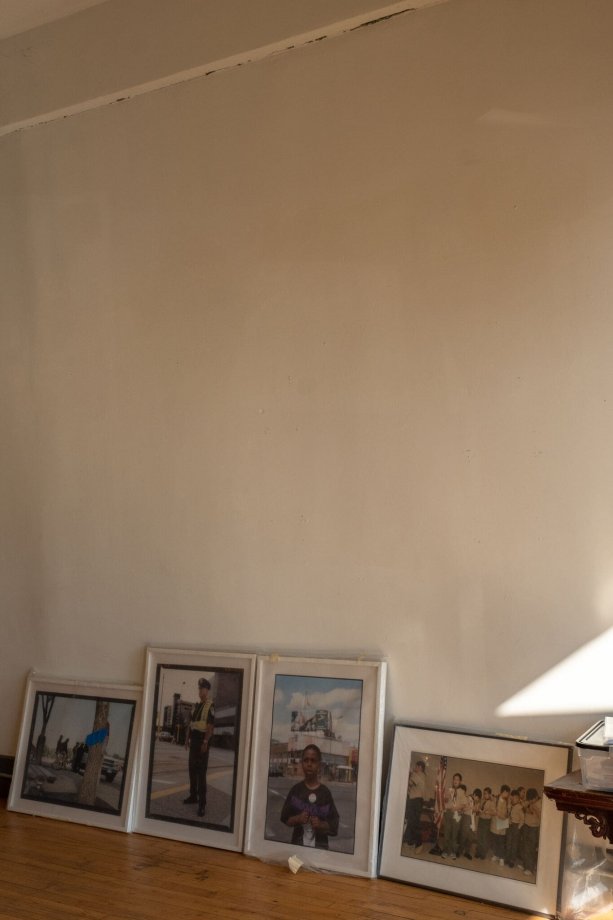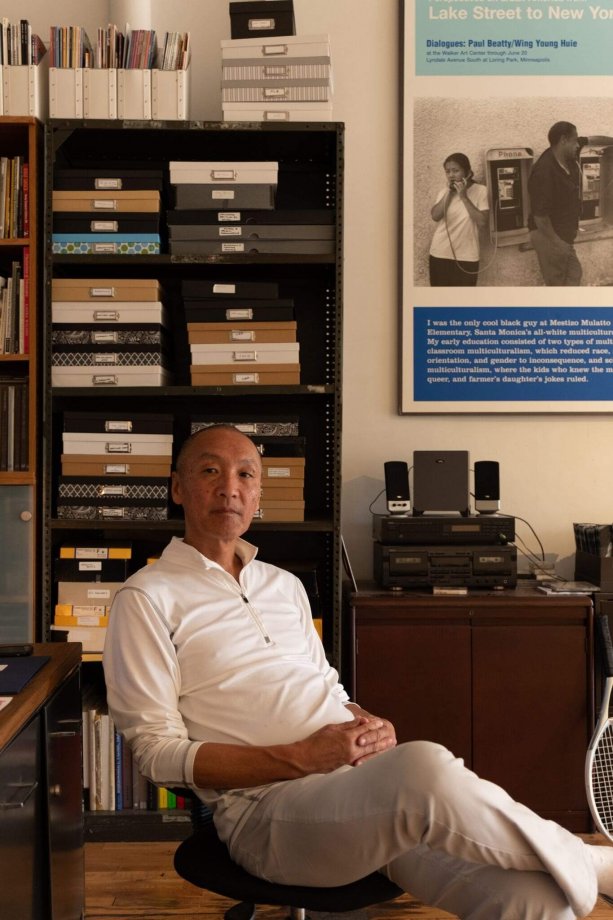Prism of Shifting Dreams: Wing Young Huie Explores Identity, Ethnicity and Dignity
The era of globalization, for better or worse, has fostered a sense that the distinction between exotically foreign and cozily local might amount to a series of clicks on a screen. We, in a sense, know our global neighbors, because we can see them—all the time and everywhere, in stunning HD clarity. But if the past two years have taught the United States anything, it is the extent to which rapid access to the unknown does not necessarily lead to understanding our neighbors, be they continents away or a few alleys over.For three decades plus, Minnesota photographer Wing Young Huie has rejected assumptions that to simply see is to know and understand. Born in Duluth to parents who emigrated from the Guangdong Province of China, Huie has long been invested in questions of identity, ethnicity and the dignity of the human experience, no matter the utter indignities thrown its way. His latest project, “Chinese-ness,” investigates the intersections of Chinese and American cultural expectations. In 2018, Huie was awarded the McKnight Distinguished Artist Award, the highest prize for an artist in the state of Minnesota—and the first photographer recipient in the award’s esteemed history.
We spoke with him in early autumn, a few months before his “Chinese-ness” book was due for release.
wing1-min
Congratulations on the recent McKnight award. What does it mean to get this kind of honor from your home state?
It’s a great honor—it’s a little surreal, actually. There are so many artists out there in Minnesota that have done such wonderful work. I’m fortunate that what I do—photography—is a very accessible medium. My work is very public, so I think I get a lot more attention than a lot of other artists.What’s interesting is I’m a self-taught photographer. My degree is in journalism—I trained to be a reporter. I don’t have any formal training. I took an intro- to-photography class and one-week workshop with Garry Winogrand, an iconic news photographer. I was 23 years old, and that’s when I decided to be a photographic artist.
Tell me more about your most recent project, “Chinese-ness.” How did you choose your subjects?
All different kinds of ways—it’s a broad look at identity through the prism that I call “Chinese-ness.” Maybe a third of the book was taken during a recent trip to China. Some of the photographs are from differ- ent places around the United States, and the rest in Minnesota. All the people I photographed, I did not know well. Some I knew a little bit, and I met them in all different ways. I meet a lot of people in what I do—a lot of educational workshops and presentations at schools and businesses—thinking about who would give an interesting perspective on “Chinese-ness.”
wing2-min
How did you come up with the concept of “I Am You,” a creative methodology—but perhaps also a philosophy?
Going to China for the first time in 2010 made me think, “What if?” What if my family had never left China? What if I had not gone to college? What if I was not the youngest of six and instead had to work 60 hours a week, like my older brothers, at my father’s restaurant? Or what if I had turned out like mother wanted me to turn out—married to a Chinese woman with a bunch of children?I started this process of wearing other people’s clothes and sometimes photographing myself wearing them, calling the series “I Am You.” I had a list. I wanted to photograph Chinese men whose lives I could have had—not just any random Chinese guy. For instance, I am a native, born-and-bred Minnesotan, but I’d never been ice fishing, on a snowmobile, hunting or worn camo. So I wanted to find middle-aged Chinese men who did those things. And finally I met someone who said, “Hey! I know this Chinese doctor who’s this hunter.” I had a great time getting to know him and photographing him—even hunting!Sometimes it took months to meet someone who introduced me to someone else. In China, for instance, I brought an interpreter—Stephen Zhong—to help with the dialect. He really understood what I was trying to do and became a kind of collaborator and my friend. He said, “You should wear the clothes of a migrant, because your father was a migrant.”
We went to Guangzhou railroad station, which is one of the busiest in China. Millions of immigrants pass through every month, trying to find work in the South, where there are many factories. When we got there, hundreds of migrants were on the steps waiting to go somewhere. We were also with a young reporter from China Daily—he pointed to a guy at the top of the stairs and said, “That guy kinda looks like you.” When we reached the top of the steps, I thought about how strange it would be for this guy [if I approached him]. The absurdity of it overwhelmed me. But he agreed—and he loved the idea of telling the story of being an immigrant for 30 years. He left home at 17—about the same age my father left China to come to America.The experience gave me a better understanding of my father, who I did not know well because he worked so hard. All the questions I never got to ask my parents, who have long passed away, I got to find out through other people’s stories included this book. What it’s like to leave everything you know and go to another place and become an American—or not become an American.
wing3-min
I noticed many of the subjects are holding little chalkboards with words in either English or Chinese. The chalkboards seem to be a motif across certain projects—what prompted the idea?
I’ve been a documentary photographer for over 30 years. With the University Avenue project, in St. Paul, I started to think that no matter how good a photograph was, it was still only a surface description. So I decided to give people chalkboards and ask them open-ended questions—like, “Who are you? How do you think other people see you, and what don’t they see? What challenges have you faced in life?”I did that for part of “Chinese-ness”—to people in China and a few people here. In China, I asked, “What was your dream as a child, and what is your dream now?” At one point I had a group of college students from China visiting my gallery in Minneapolis. I asked, “What is the Chinese dream? The American dream? What is your dream?” The Chinese dream was to be more strong, to rebuild the dynasty, to be a developed country. The American dream was to rule the world! And then the individual dream was to be an artist, a designer, to do what they want to be happy.
You have published several photographic monographs. Publishing seems an integral part of your overall practice.
“Chinese-ness” is my seventh book. A lot of my books were projects first. “Lake St, USA,” for instance, was a catalog of the project. “Chinese-ness” was meant to be a book first—it’s more personal. A third of it is text, interviewing a lot of the people in the photographs—their words, their quotes. Some of the people wrote their own stories. It’s wonderful to have a photography book so that the project lives on. As an artist, I do a lot of different things to make a living, and the books help get my work out into the world.
wing4-min
Who are some of your influences, in art or outside of it?
I read a lot. A lot of articles inform what I do and give me ideas for projects. As far as specific individuals, it’s more like I take a little bit of this and a little bit of that from different mediums. Sometimes I’m inspired by the people I photograph—like Jarrelle Barton, whom I met when looking for material for “Chinese-ness.” I went to a Chinese New Year celebra- tion at the Mall of America. It was very informal. I saw this man—a young black man—playing a very traditional Chinese instrument. He was surrounded my maybe 20 Chinese people, and they were very interested in what he was playing. After he played a song, they would ask him questions in English, and he would reply in Mandarin. You could see the looks on their faces shift from amusement to amazement.
As I came to find out, Jarrelle grew up in Cleveland and had suffered trauma as a child. He would go to the public library to check out music CDs. He checked out a Chinese music CD—and heard this instrument, the guzheng, for the first time. It was a cross between a zither and a harp, and he felt a deep connection that he’s never felt since. So he immediately created his replication of the instrument out of a wooden tea tray and tied some guitar strings to it. His grandmother saw how devoted he was to playing it, and she broke down and bought him one. Then he opened it up and all the instructions were in Chinese. So he taught himself Chinese to play this instrument—over the course of the year he taught himself the language and how to play this instrument. Soon he called this guy who’s a master in Prairie Lake, Minnesota, and moved across the country to study with him. Chinese audiences were appreciative. But sometimes they would come up to him and say, “You shouldn’t play this. You’re not Chinese.” But that instrument was a way to survive.
wing5-min
This idea of transcending identity and race to be what you want to be, rather than what society says you should be—that is of interest to me. Society reminds him everyday of his blackness, and yet he chooses to play this instrument. What is appropriate and what is appropriation is something he has to face everyday.What I’m trying to do is understand how things are—not how they should be. And to photograph in a way that invites the viewer to consider what they think. For a lot of my life, I’ve been trying to understand how my Chinese-ness collides with my Minnesota-ness and my American-ness. At some point, my Chinese-ness doesn’t define me, and my lack of Chinese-ness doesn’t define me.
Photography by Attilio D'Agostino.
This story originally appeared in ALIVE Issue 4,
.





